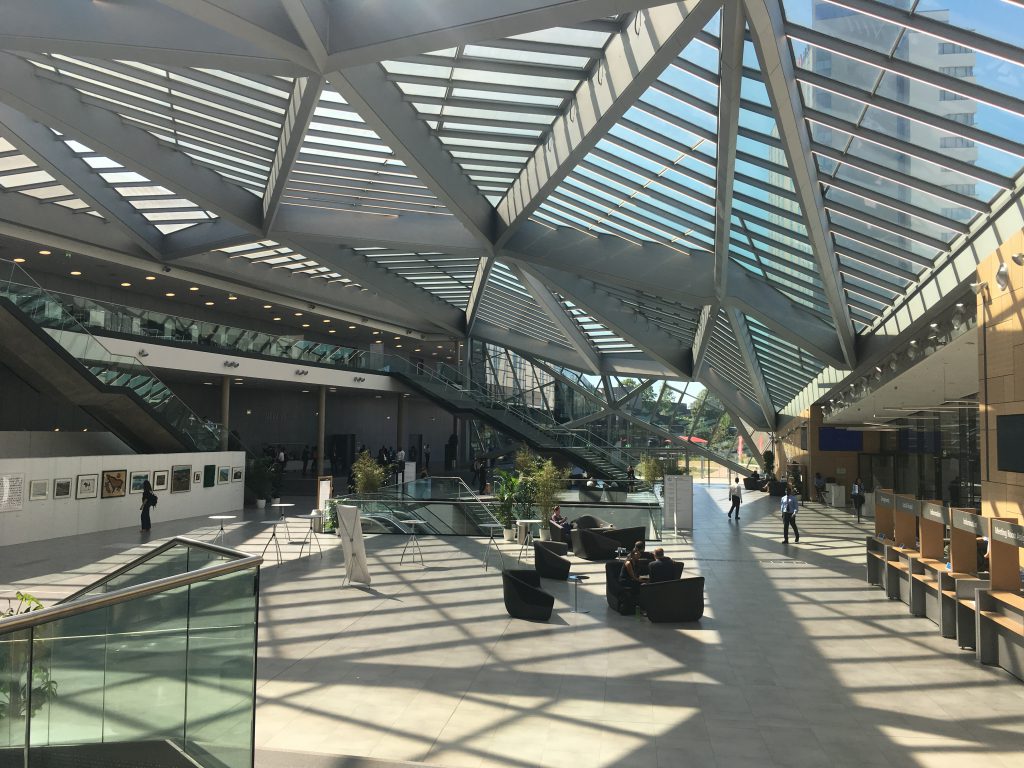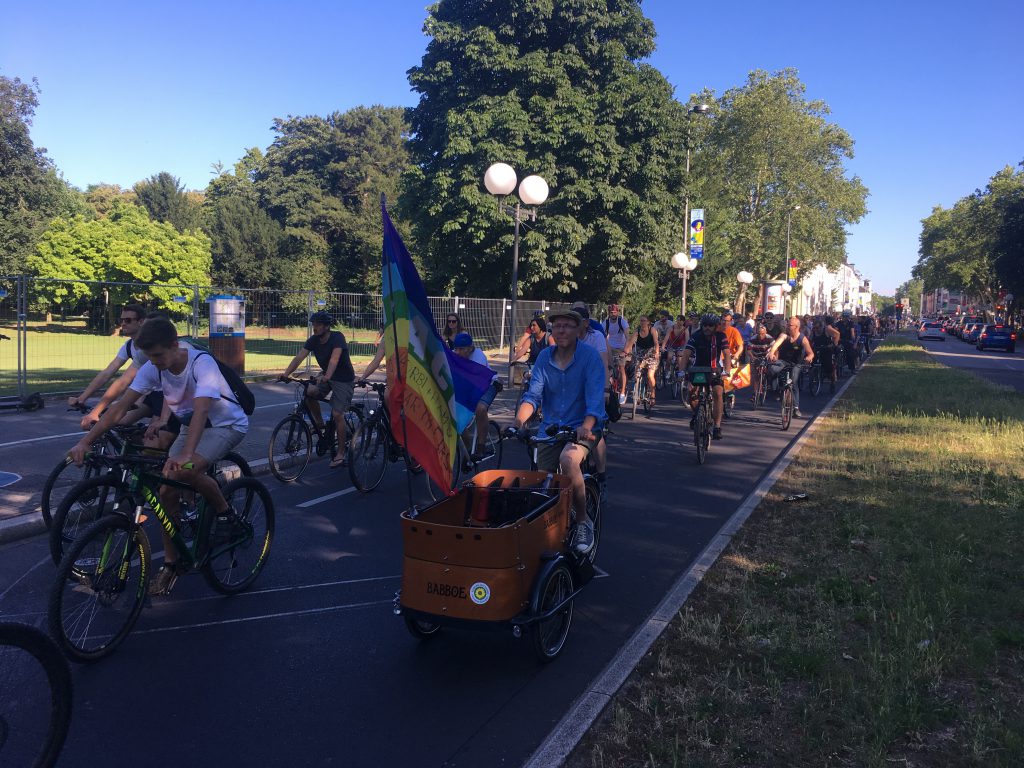See the interview with Professor Keri Facer, the Zennström Chair of Climate Change Leadership, for Futuuri magazine at the Constructing Social Futures Conference 2019
Year: 2019 (Page 2 of 2)
Climate Change Leadership’s Zennström Professor, Keri Facer, engaged in Almedalsveckan 2019. Watch the seminars below.
July 3, 2019: Climate vision – what is the role of universities in combating climate change?
How can universities be a driving force in the fight against climate change? What expectations can placed on scientists, researchers and teachers and how do we involve students?
July 1, 2019: Climate change leadership – perspectives from science, industry and politics
Climate change is a scientific, economic and political challenge. Which leadership strategies are needed to tackle and minimize climate change? How can science, industry and politics co-operate in climate leadership and how can we develop an effective climate change leadership?
July 1, 2019: Universitetens roll för en hållbar värld – omvärldens förväntningar
Universitetens viktigaste bidrag till en hållbar värld går via forskning, utbildning och samverkan – men hur ska detta ske på bästa sätt? Vad finns det för förväntningar från omvärlden på universitetens insatser och vilka typer av aktiviteter ger bäst resultat?
“Science is not negotiable, another world is possible”
By Sanna Barrineau
25 June, 2019. It’s 37 degrees celsius in Bonn, Germany at the United Nations Framework Convention on Climate Change (UNFCCC) and it’s the second week of one of the largest climate change conferences in the world during an unprecedented European heatwave. Representatives of the UNFCCC blithely encourage conference participants to abandon their suits and ties so as to avoid the old-school style of keeling over due to heat exhaustion. Interventions by youth and climate justice groups offer dark contrasts to this relaxed humour in the form of die-ins, songs, and impassioned speeches. From my vantage point of observer, the phrase climate justice emerged in every room, yet was noticeably, albeit unsurprisingly, absent in the outcomes of the negotiations.
If one was determined to create the most just, fair, equal, and true-to-science global climate change regulation in history, one would be hard put to find a place with more qualified people in the room, brimming with passion and intent. While parties are busy negotiating behind closed doors, scientists and civil society groups create a rich series of side events, informative and supportive spaces for participants. The overall effectiveness of these is lessened by the absence of parties, leaving the session leaders to preach to the choir but also to proffer narratives of ‘green growth’ that are met by frustration by the ‘systems change, not climate change’ advocates and representatives of LDCs suffering the negligence of this mantra.

Here are some observations from a humble observer:
- Intergenerational justice: Referring to the parts per million of CO2 in the atmosphere, Dr Julie Brigham-Grette stated that, “We are in uncharted territory”. 120 years is all it takes to do what we have done with our emissions. Strong scientific inputs on intergenerational justice in climate policy, but still talk about “green growth” from the Nordic consortium (including Finland who has declared that it will reach net-zero emissions by 2035). Results of this kind of climate leadership have clear consequences for future generations.
- Sailing to COP25: A consortium of folks will be sailing to COP25 in Chile to avoid the emissions associated with flying. They were recruiting co-sailors for the journey.
- Climate Apartheid: A report published by UN special rapporteur stated that we’re creating a ‘Climate apartheid’. “Developing countries will bear an estimated 75% of the costs of the climate crisis… despite the poorest half of the world’s population causing just 10% of carbon dioxide emissions.”
- Sweden’s Ambition: Although Sweden showed ambition in relation to their Nationally Determined Contributions (NDCs), reliance on future negative emission technologies are far from certain in their mitigation roadmap. Territorial emissions are decreasing, but is it decoupling or delusion?
- Gender and Climate Change: Ideas and examples abound for implementing gender-responsive NDCs. In preparation for COP25, WEDO is developing a report on what processes have been happening trying to link gender and NDCs and climate policies. See also their Gender Climate Tracker App. Key thoughts from this session: Effects of climate change are felt differently across class and gender. Gender-sensitive climate policy is key to decreasing social inequalities.
- Migration and Displacement: Climate-induced migration highlights how the poor are especially vulnerable to climate change. Teresa Anderson, ActionAid International, explains that there is massive displacement taking place as a result of climate change. Displacement is triggered by disasters but is dependent on economic and social factors, therefore most difficult for the poor who have fewer options than those with capital. See more on this topic: Climate Change Knows No Borders (publication). Climate change always adds an additional layer to the intersectional look at migration and so, approaching from a human rights based perspective should always guide our decisions and actions. The ultimate goal is to respond with solidarity.
My week in Bonn concluded with seeing hundreds of cyclists bearing the Fridays for Future flag making their way through the city. Another world is possible.

Filibustering and Floundering – SB50 in Bonn
Guest post by Guy Finkill, CEMUS, Climate Change Leadership in Practice
Death by a thousand acronyms. That’s what it can often feel like when engaging with the subsidiary body negotiations at the UNFCCC at its headquarters in the leafy and embassy-ridden area of Bonn. In reality, the situation is much more dire – as an unprecedented heatwave stretches across Europe, the secretariat is forced into making bold and impactful decisions. Banishing big polluters from the negotiation space? No. Think again. They amend the official dress code so men are not forced to sweat themselves into a stupor on their way to the spacious air-conditioned conference halls where they negotiate their level of compassion for countries bearing the real brunt of the rapidly emerging extremes of climate change.
Morality falls victim to bureaucracy. Political will shudders in the face of a potential downturn in prosperity. In the multi-lateral assessment forum, the UK boast their 38% reduction in territorial emissions since 1990 while still achieving an upturn in economic growth (4). And growth and prosperity are good for everyone, right? Let’s take a moment to think about who this unquestionable prosperity is benefitting. Last time I checked, the UK was experiencing the highest levels of inequality since the 1960s (6) with 44% of the nation’s wealth in the hands of 10% of the population (7). The green growth narrative is top of the agenda here at SB50 with outlandish claims of reaching net-zero emissions by 2050 being the hot topic. The fanciful mathematics and geoengineering pipedreams (3) that these claims are based upon have yet to truly enter the discussion, but that time will come.
Saudi Arabia and Egypt play pass the obfuscating parcel as the AIM (Arrangements for Intergovernmental meetings) negotiations dance around the subject of Conflict of Interest within the negotiation arena. Delegations huddle together, before they make their official announcements in the form of bureaucratic riddles, shrouded in the legitimatisation of political diplomacy. The US, infamous for declaring their withdrawal from ratifying the Paris Agreement, are still lingering around; pushing for BINGO (Business and Industry NGOs) accredited representatives to have a higher degree of participation in the discussions – efficiently opening the door for the fossil fuel industry to the conference while washing their hands of responsibility with the blood of the small-island developing states.
Chile, hosts of the upcoming COP25, are on the charm offensive in preparation for their presidency of the next round of negotiations; dishing out complimentary wine every evening to distinguished delegates. The chink of glasses brimming with Merlot appear to be sufficient to extinguish the concern of residents of Isla Riesco as the Chilean government battles its own environmental court to keep a devastating open-cast mine operational (8).
Environmental NGOs and youth groups rally together to call out the elephant in the room, tirelessly working towards increased transparency and kicking big polluters out of the negotiation space. Here are the closing remarks of Climate Justice Now (04:38-06:30), denouncing nation states for their continued subsidising of the fossil fuel industry (1) while employing market mechanisms and offsetting (2) to delay climate action and enforce the seemingly impermeable strategy of inertia. Progressive discussions in the side events hosted by these groups provide fresh hope and inspiration to a jaded observer – unfortunately these events are not mandatory for party delegates to attend, perhaps something for the UNFCCC to consider in future meetings of the subsidiary bodies. And so, the 50th meeting of the subsidiary bodies draws to a close, a few modifications to official texts achieved but not much to write home about. ~8000 activists were involved in the occupation of Garzweiler lignite coal mine less than 70km away from the UNFCCC conference in between the two weeks of talks – demanding climate justice as state-funded police brutally repress their call to action. Swedish teenage activist Greta Thunberg called for us to panic at COP24 in Poland & the World Economic Forum in Davos as our house is on fire. Swathes of forest fires currently engulf areas outside of Berlin (5), our house IS on fire, perhaps we should take acti … ah wait it’s 17:30, I think the Chilean presidency stand are serving wine again. Good, I’m parched.
References
1. Coady, D., Parry, I., Sears, L. & Shang, B. 2017, “How Large Are Global Fossil Fuel Subsidies?”, World Development, vol. 91, pp. 11-27.
2. Dufrasne, 2018. Accessed online 29/06/19 Webpage
3. Fuss, S., Canadell, J.G., Peters, G.P., Tavoni, M., Andrew, R.M., Ciais, P., Jackson, R.B., Jones, C.D., Kraxner, F., Nakicenovic, N., Le Quéré, C., Raupach, M.R., Sharifi, A., Smith, P. & Yamagata, Y. 2014, “Betting on negative emissions”, Nature Climate Change, vol. 4, no. 10, pp. 850-853.
4. Hausfather, 2019. Accessed online 29/06/19 Webpage
5. Insurance Journal, 2019. Accessed online 29/06/19 Webpage
6. McGuiness & Harari, 2019. Accessed online 29/06/19 Webpage
7. Partington, 2018. Accessed online 29/09/19 Webpage
8. Wright, 2019. Accessed online 29/09/19 Webpage
Last Friday, the Climate Leadership Node was invited to Södermanlands klimatdag (climate day) 2019. Södermanland is the county immediately to the south-west of Stockholm with a population of roughly 300 000 people. It is also one of the counties for which we calculated a carbon budget in 2018. In this report, the county’s allocated budget was 14Mt C02, roughly 5% of Sweden’s total budget. If emissions continue at 2016 levels, Södermanland will break this budget by mid next decade. Hence, we recommend an emissions reduction curve of 16% p.a. See the full report here.
The conference took place at ReTuna, the world’s first recycling mall, where pre-loved goods are given a second chance through recycling and upcycling (see above picture, source: etunanytt.se). In the morning, Aaron, research assistant at the Climate Change Leadership Node, gave a presentation on Södermanland’s carbon budget and what this means for the county. Throughout the day we heard from different local government authorities, businesses working with sustainability and of course ReTuna, itself a leading example of circular economy.
We also heard from Södermanland’s largest and Sweden’s fourth largest individual source of emissions, the SSAB Oxelösund steel production facility. This corresponds to roughly half of the entire county’s emissions and means that Södermanland has one of the highest per capita CO2 emissions in Sweden. It was exciting to hear how presenters and participants engaged with our carbon budget analysis and continually referred to our recommended targets throughout the day.
In fostering local climate leadership, an ongoing question is how to manage local emissions that add value at the national level, such as SSAB Oxelösund. As our research continues, we will investigate this further and explore different ways of allocating emissions and associated responsibilities amongst different levels of political influence and across different sectors.
Whilst at the conference, Aaron was interviewed by SVT Södermanland about the county’s budget. You can watch it here
https://www.svt.se/nyheter/lokalt/sormland/sa-maste-sormlanningarna-koldioxidbanta

